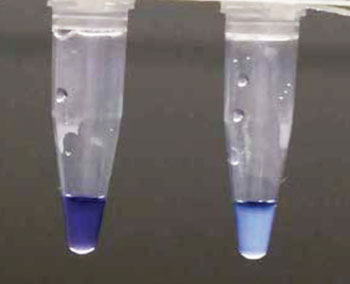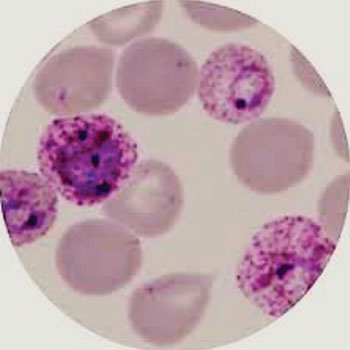High-Throughput LAMP Assay Targets Benign Tertian Malaria
By LabMedica International staff writers
Posted on 28 Feb 2016
Diagnostic tools for Plasmodium vivax infection, also known as benign tertian malaria, in non-reference laboratory settings are limited to microscopy and rapid diagnostic tests (RDT) but these are unreliable at low parasitemia.Posted on 28 Feb 2016
Based on a DNA amplification technology called loop-mediated isothermal amplification (LAMP), an assay has been developed and validated using colorimetric, high throughput assay (HtLAMP) suitable for the detection of P. vivax infection in non-referral settings.
An international team of scientists led by those at the University of Queensland (Brisbane, Australia) developed high-throughput LAMP assay targeting a P. vivax mitochondrial gene and deploying colorimetric detection in a 96-well plate format was developed and evaluated in the laboratory. Diagnostic accuracy was compared against microscopy, antigen detection tests and polymerase chain reaction (PCR) and validated in samples from malaria patients and community controls in a district hospital setting in Sabah, Malaysia.
The limit of detection of the HtLAMP-Pv assay was compared with the SD Bioline Pf/Pan RDT (Alere Standard Diagnostics; Yongin-si, Republic of Korea). Blood samples were collected from microscopy positive, symptomatic patients presenting as outpatients and asymptomatic, microscopy negative, community controls as a result of reactive active case detection and these were stored as 20 μL filter paper blood spots. A subset of 149 microscopy positive samples and 112 microscopy negative samples were used to compare the performance of the P. vivax HtLAMP (HtLAMP-Pv), with microscopy and PCR. High throughput (HtLAMP) was performed on a 96-well standard U-bottom microtiter plate. The microtiter plate was then read in an enzyme-linked immunosorbent assay (ELISA) plate reader at 600 nm wavelength to obtain an optical density (OD) reading of each well.
The HtLAMP-Pv assay performed with an estimated limit of detection of 1.4 parasites/ μL. Assay primers demonstrated cross-reactivity with P. knowlesi but not with other Plasmodium spp. Field testing of HtLAMP-Pv was conducted using 149 samples from symptomatic malaria patients (64 P. vivax, 17 P. falciparum, 56 P. knowlesi, seven P. malariae, one mixed P. knowlesi/P. vivax, with four excluded). When compared against multiplex PCR, HtLAMP-Pv demonstrated a sensitivity for P. vivax of 95% (61/64), and specificity of 100% (25/25) when P. knowlesi samples were excluded. HtLAMP-Pv testing of 112 samples from asymptomatic community controls, seven of which had submicroscopic P. vivax infections by PCR, showed a sensitivity of 71% (5/7) and specificity of 93% (98/105).
The authors concluded that the development and validation of a novel P. vivax-specific LAMP assay which combines a low limit of detection with a high throughput, colorimetric, field applicable molecular diagnostic assay. As such, the HtLAMP assay holds much promise as a diagnostic tool to support malaria elimination efforts in resource-limited P. vivax endemic settings. The study was published on February 12, 2016, in the journal Public Library of Science Neglected Tropical Diseases.
Related Links:
University of Queensland
Alere Standard Diagnostics
















